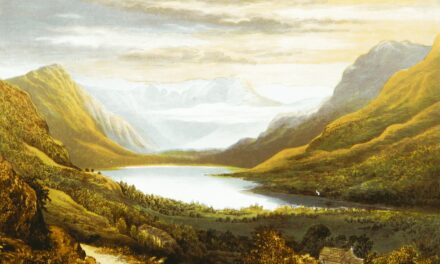Realism art emerged in the mid-19th century as a reaction against the idealised and romanticised depictions of the world in art. It sought to portray the world as it truly was, without embellishment or idealisation. The movement was a response to the social and political changes of the time, including the Industrial Revolution and the rise of urbanisation.
Realist artists aimed to capture the everyday lives of ordinary people, often focusing on the working class and their struggles. The movement was also influenced by the growing interest in science and the natural world, leading artists to explore themes of observation and objectivity in their work. Realism art was heavily influenced by the writings of French novelist and critic Émile Zola, who championed the idea of “naturalism” in literature, which sought to depict life as it truly was, without romanticising or moralising.
This idea of presenting life as it is, without idealisation, became a central tenet of realism art. The movement also drew inspiration from the work of Dutch genre painters of the 17th century, who depicted scenes from everyday life with a keen eye for detail and realism. Realism art sought to capture the essence of modern life, with a focus on the mundane and ordinary, rather than the grand and heroic.
Summary
- Realism art originated in the mid-19th century as a reaction against romanticism and idealism.
- Key characteristics of realism art include a focus on everyday subjects, attention to detail, and an emphasis on depicting the world as it is.
- Influential realism artists include Gustave Courbet, Jean-François Millet, and Honoré Daumier.
- Realism art has been embraced in different countries, with artists such as Winslow Homer in the United States and Ilya Repin in Russia making significant contributions.
- The impact and legacy of realism art can be seen in its influence on later art movements and its continued relevance in contemporary art.
Key Characteristics of Realism Art
Characteristics of Realism Art
Realist paintings often featured naturalistic lighting and a subdued colour palette, reflecting the sombre and unembellished nature of the subjects being depicted. One of the key characteristics of realism art is its rejection of traditional academic standards of beauty and composition. Instead of idealised figures and dramatic compositions, realist artists focused on portraying the raw and unvarnished reality of their subjects.
Subject Matter and Themes
This often meant depicting scenes of poverty, hardship, and struggle, as well as the mundane aspects of everyday life. Realism art also sought to capture the psychological depth and emotional complexity of its subjects, presenting them as fully realised individuals with their own unique experiences and struggles.
Artistic Approach and Philosophy
The movement’s emphasis on observation and objectivity led to a distinct artistic approach, where artists aimed to accurately represent the world around them, without embellishment or idealisation. This approach allowed for a more nuanced and realistic portrayal of life, one that was unflinching in its depiction of the human experience.
Influential Realism Artists

One of the most influential figures in the realism art movement is Gustave Courbet, a French painter who is often credited with being the father of realism. Courbet’s work challenged the conventions of academic art, focusing on scenes of everyday life and ordinary people. His painting “The Stone Breakers” is a prime example of his commitment to depicting the working class with honesty and empathy.
Another prominent figure in realism art is Jean-François Millet, whose paintings often depicted rural life and agricultural labor. His work “The Gleaners” is a powerful portrayal of peasant women collecting leftover grain from a harvested field. In addition to Courbet and Millet, other influential realism artists include Honoré Daumier, a French printmaker and caricaturist known for his satirical depictions of French society, and Thomas Eakins, an American painter who focused on realistic depictions of everyday life in Philadelphia.
These artists played a crucial role in shaping the development of realism art, pushing boundaries and challenging traditional artistic conventions.
Realism Art in Different Countries
Realism art had a significant impact in various countries around the world, each with its own unique interpretation and approach to the movement. In France, realism art was closely associated with social and political change, with artists such as Gustave Courbet using their work to challenge the status quo and advocate for social justice. In England, the Pre-Raphaelite Brotherhood embraced realism as a means of rejecting the artificiality of academic art and returning to a more sincere and truthful representation of nature.
In America, realism art took on a distinctly national character, with artists such as Winslow Homer and Thomas Eakins capturing the spirit of American life in their paintings. Their work often focused on scenes of everyday life in urban and rural America, reflecting the country’s rapid industrialization and expansion. In Russia, realism art became closely linked with social and political activism, with artists such as Ilya Repin using their work to critique the injustices of Tsarist society and advocate for reform.
Impact and Legacy of Realism
The impact of realism art was profound and far-reaching, influencing not only the visual arts but also literature, theatre, and social thought. The movement challenged traditional artistic conventions and paved the way for new approaches to representing the world. Realism art also had a significant impact on social consciousness, bringing attention to the struggles and hardships faced by ordinary people.
By depicting scenes of poverty, labor, and urban life, realist artists helped to humanize their subjects and foster empathy and understanding. The legacy of realism art can be seen in the continued emphasis on truthfulness and authenticity in contemporary art. Many artists today continue to draw inspiration from the realist tradition, seeking to capture the complexities and nuances of modern life with honesty and integrity.
The movement also laid the groundwork for later artistic movements such as impressionism and modernism, which built upon the realist commitment to representing the world as it truly is.
Realism Art in the Modern World

The Evolution of Realism
Contemporary realist artists draw on the traditions of the movement while also incorporating new techniques and technologies to explore themes of identity, society, and culture. Many contemporary realist artists use photography as a reference for their work, capturing moments of everyday life with precision and detail.
Influence on Creative Industries
Realism art also continues to be a source of inspiration for filmmakers, writers, and other creative professionals who seek to capture the complexities of human experience with honesty and integrity.
Lasting Impact
The movement’s emphasis on observation and objectivity has had a lasting impact on how we understand and represent the world around us.
How to Appreciate Realism Art
To fully appreciate realism art, it is important to approach it with an open mind and a willingness to engage with its themes and subjects. Take time to study the details in each painting, paying attention to how the artist has captured light, texture, and form. Consider the emotional depth and psychological complexity of the subjects being depicted, reflecting on their experiences and struggles.
It can also be helpful to learn about the historical context in which each painting was created, considering how social and political factors may have influenced the artist’s choices. By engaging with realism art in this way, we can gain a deeper understanding of its significance and impact, as well as its enduring relevance in today’s world.
If you are interested in learning more about different art movements, you may also want to read about Impressionism. This art movement, which originated in France in the 19th century, focused on capturing the fleeting effects of light and colour. It was a reaction against the traditional academic painting of the time and sought to depict the modern world in a more immediate and spontaneous way. Understanding Impressionism can provide valuable context for appreciating the Realism art movement.
FAQs
What is the Realism Art Movement?
The Realism Art Movement was a 19th-century artistic movement that aimed to depict everyday life and the world as it truly was, without idealization or romanticism.
When did the Realism Art Movement begin?
The Realism Art Movement emerged in the mid-19th century, primarily in France, as a response to the idealized and romanticized depictions of life and society in art.
Who were some key artists associated with the Realism Art Movement?
Key artists associated with the Realism Art Movement include Gustave Courbet, Jean-François Millet, and Honoré Daumier, among others.
What were the main characteristics of Realism art?
Realism art aimed to depict everyday life and the world as it truly was, often focusing on the lives of ordinary people, rural landscapes, and urban scenes. The style emphasized accurate and detailed representation, often with a focus on social and political commentary.
How did the Realism Art Movement impact the art world?
The Realism Art Movement had a significant impact on the art world, challenging traditional artistic conventions and paving the way for later movements such as Impressionism and Modernism. It also sparked important discussions about the role of art in society and the representation of reality in artistic expression.




